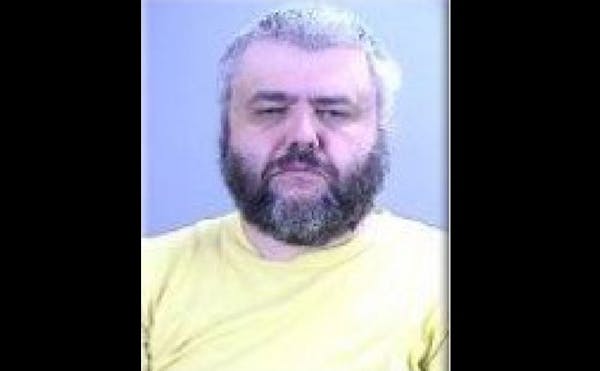Minnesota health and law enforcement officials on Monday reported an "alarming" rise in the amount of drugs seized by authorities last year, led by a massive surge in methamphetamine seizures.
State police agencies collected a record 488 pounds of meth in 2016, up nearly 500 percent from a low in 2009. While experts have warned in recent years that meth use has started to creep back up, the amount of meth seized taken last year more than doubled that in 2015.
"What we're seeing is extremely alarming," said state Human Services Commissioner Emily Johnson Piper. "It's clear meth is back."
Arguing for more state resources for drug-addiction treatment and spreading public awareness, law enforcement officials said the rise in drug use cuts across Minnesota and is not a rural or urban problem.
"The alarming rate at which drugs are being seized from the Twin Cities to Greater Minnesota should concern every single Minnesotan," said state Public Safety Commissioner Mona Dohman.
During meth's previous peak more than a decade ago, more than 400 labs were shut down throughout the state. That was down to 13 last year, the result of strict regulations on the sale of pseudoephedrine. Officials on Monday said the void has been filled by meth producers in Mexico.
The rise in seizures of prescription pills, including opioids, has officials worried, too. Police seized more than 58,000 pills in 2016, more than three times the amount seized the year before. Some potent painkillers, such as fentanyl, are arriving in Minnesota from China.
"Law enforcement is working hard to get the drugs off our streets and stop them from coming into our state, but we can't win this battle alone," Dohman said. "We simply cannot enforce our way out of the problem."
Joining law enforcement officials were health officials who said part of the state's response should include expanded drug treatment options. Piper reported that treatment of methamphetamine addiction has surpassed its 2005 peak of 6,703 admissions to more than 11,000 in 2016. Treatment for meth addiction is now second only to alcohol in treatment admissions.
"We're concerned that drug abuse and drug use is a medical issue," Piper said. "We need to reframe treatment for drug abuse away from an acute model of care and toward a chronic model of care."
Gov. Mark Dayton's budget proposal for the next two years includes an additional $1 million a year to expand drug task forces known as violent crime enforcement teams, increased funding for additional narcotics special agents at the Bureau of Criminal Apprehension, a drug chemistry forensic scientist and a criminal intelligence analyst to support a drug monitoring initiative.
State officials were unable to say exactly what is behind the rise of drug use and seizures, particularly of meth, but surmised that reduced public awareness may have contributed to the rise.
"People were aware of the dangers of the use of methamphetamine," said Brian Marquart, statewide gang and drug coordinator for the Department of Public Safety. "For a variety of reasons, we've had other drugs, whether it be synthetics, whether it be heroin, whether it be opiates, come to the forefront, that I think some of that messaging has not been heard as loud as it should. That methamphetamine is bad."
Carol Falkowski, one of the state's foremost experts on drug abuse, said it's concerning to see the continued rise in meth seizures in Minnesota. An increase in seizures can indicate that police agencies are more aggressively intercepting drugs, but the rise in meth seizures is troubling, she said.
"I think we can conclude this is still an upwardly mobile problem that we're facing," said Falkowski, a former director of the alcohol and drug abuse division at the state Department of Human Services.
Falkowski said ongoing pressure and awareness could help stem the tide of drug abuse. Because of its widespread impact, she warns that "there's not a community in the state that is safe" from the impact of drug trade and addiction.
"We can't make progress on drug abuse without the ongoing pressure from law enforcement and the ongoing involvement of communities and prevention and the ongoing effort to expand and improve treatment," Falkowski said.
Ricardo Lopez • 651-925-5044
